
SIG P229 - KJW
The SIG P226 is a very popular sidearm with security forces and individual all over the world, so itís little surprise that SIG produced a Ďcompactí version for those after a weapon easier to conceal.
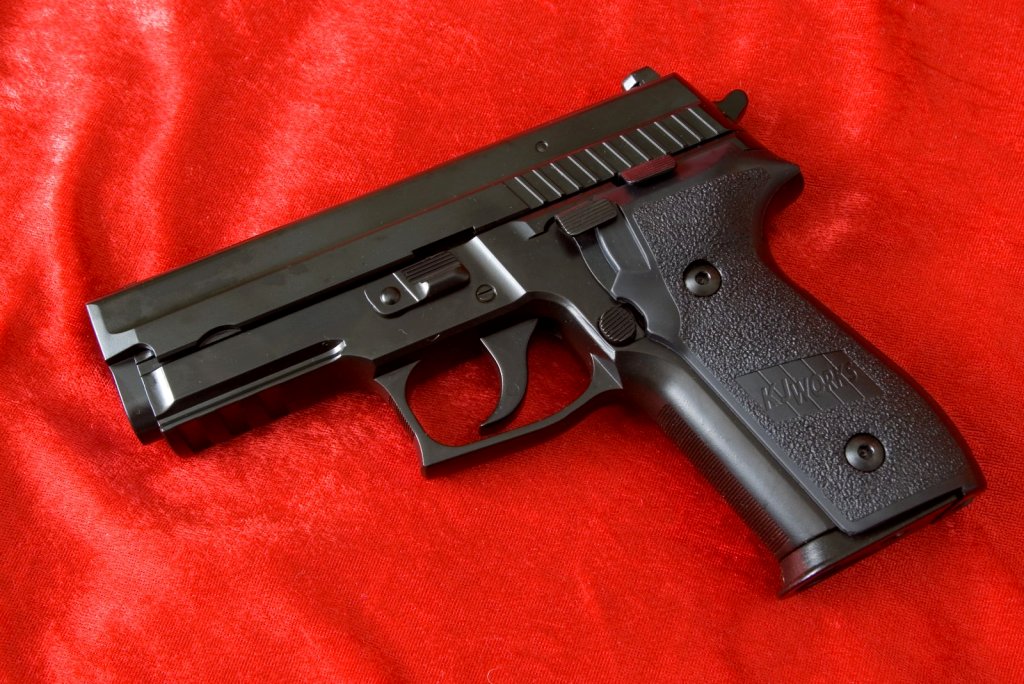
The 229 is used by many police and military units including the SAS and US Navy SEALs, so itís possibly a little surprising that more short barrelled SIGs arenít available in airsoft form. Tanaka Works have made one on and off, but the one from Taiwanese manufacturer Kuan Ju Works (usually known as KJW) is the most widely available currently, so is it any good?
In the Box
The box looks quite promising.

The lid features dark, slightly matt photographic artwork showing the KJW KP02 Ė thereís no mention of SIG Ė whilst the gun is fitted in an uninspiring, but effective, polystyrene bed, along with a speedloader and a manual, much of which is in English, always a plus for UK or US airsofters.
First Impressions
The KJW KP02 is all metal (only the grips are not, replicating the real thing) and has a reassuringly heavy and quite well balanced feel to it.
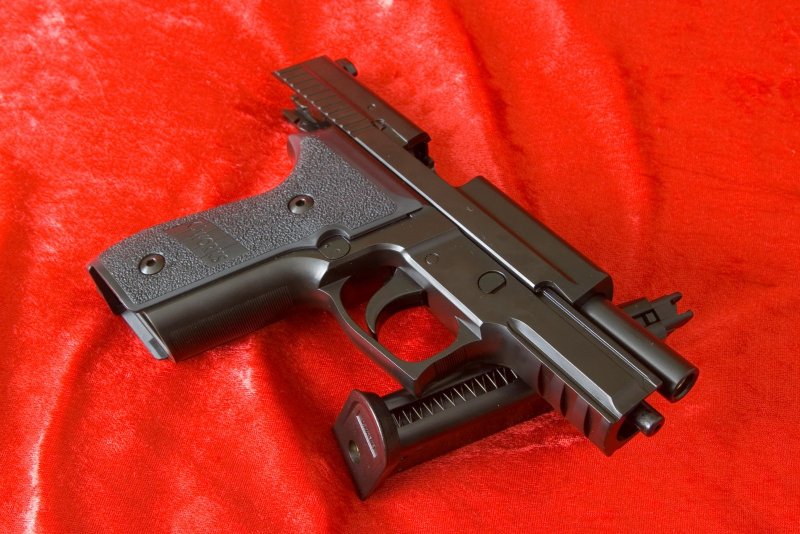
Sadly, the thick black paint covering the gun (coupled with a complete lack of trade marks) looks neither realistic nor very good, lending the gun a rather cheap appearance.
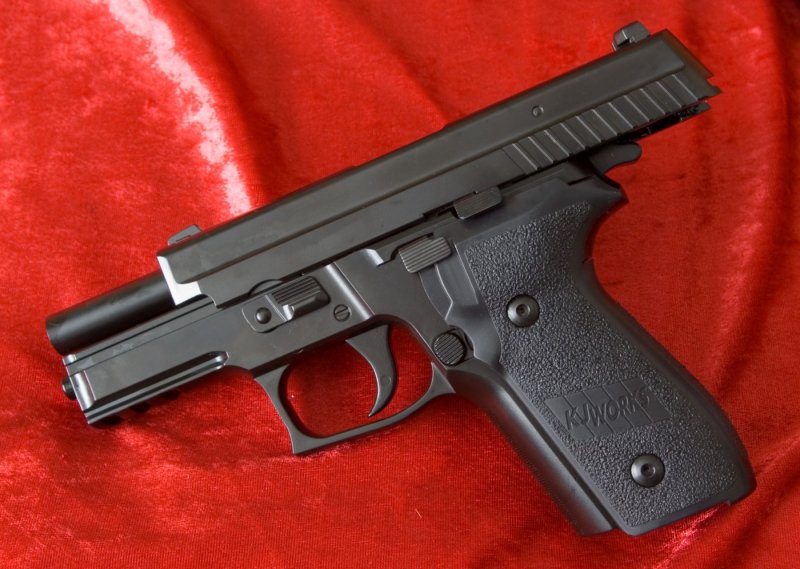
All the controls are metal and painted in the same thick black paint as the rest of the gun. The magazine release, slide lock and take down lever all work smoothly enough and are realistically placed for a SIG.
Personally, especially as a left hander, I always find the controls slightly oddly placed, with the disassembly lever falling under the thumb where most guns have their slide lock.
Closer Look
As mentioned before, there are no markings on the slide or frame of the KP02 at all and the hard plastic grips are marked only KJ Works, rather than the correct SIG/P229.

The grips are secured by hex headed screws and feature a lanyard securing point in the base, replicating the real thing and providing a useful way of ensuring your GBB doesnít go AWOL out on the field.
Generally the casting of the KJW SIG is fairly clean, with no casting seams except for one down the middle of the trigger, which is particularly uncomfortable for an ungloved trigger finger and the overall look of the 229 is accurately replicated.
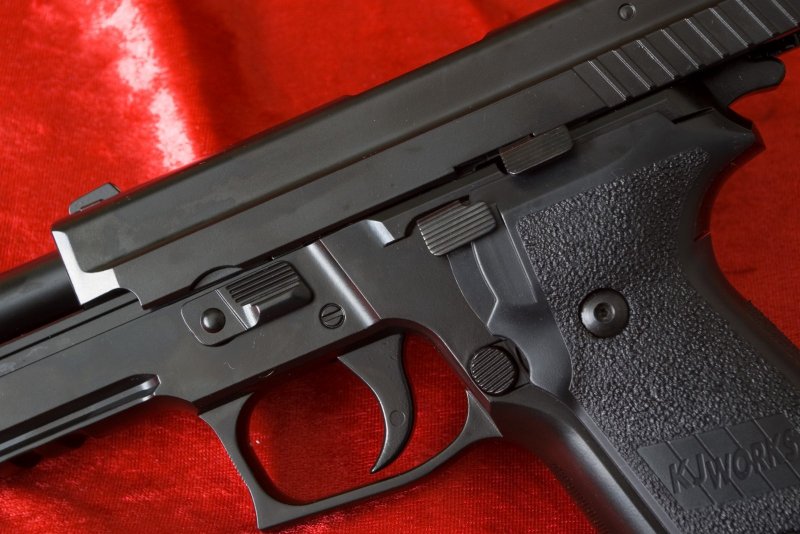
The slide features the correct half height cocking serrations at the rear and the slightly odd overlap of the frame in relation to the slide (unique to the railed 229s) is also featured.
The accuracy extends to a working decocker, which is, to my mind, an essential feature on an airsoft replica of any pistol with it in real form. On this example this worked reliably and smoothly.
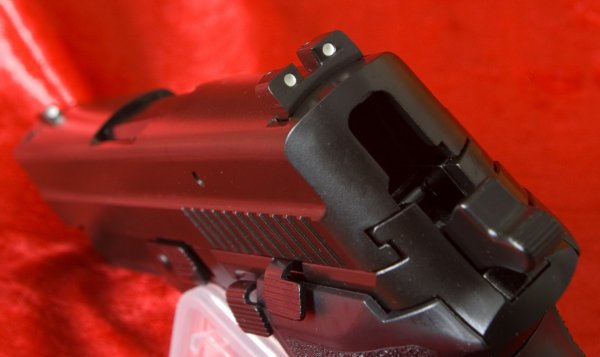
In fact, the mechanism of the P229 felt pretty precise and well engineered in operation in general.
Stripped down, the internals look like a Tokyo Marui SIG P226 clone and look better made than the external promises. One reviewer reported fitting a Tokyo Marui SIG P226 top end to his KJW KP02 and it worked without problem.
The TM cloning extends to the familiar wheel hop up adjustment under the barrel, which does require field stripping to set, but is simple and requires no tools, so can be done in the field to compensate for temperature changes.

The KP02 features good clear sights. The blade front and non-adjustable rear sight both feature white dots and appear to be fitted in dovetails, although the front sight is cast into the slide despite appearances.
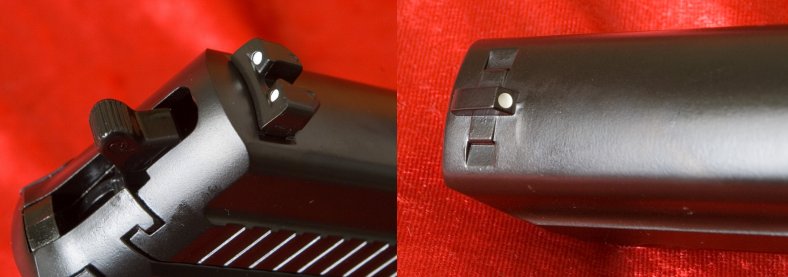
The magazine is a little different to the 226s Iíve seen from Tokyo Marui and Tanaka Works, featuring a curved lip on the front of the magazine base. The magazine holds 23 rounds and I encountered no issues with feeding during my testing. Loading the magazine with gas and BBs was equally uneventful.
One important point to note is that the KJW magazines are not compatible with those for Tokyo Marui SIG P226s, despite the similar designs of the internals, so it appears you should buy a few spare mags at the same time, if you opt for the KJW KP02.
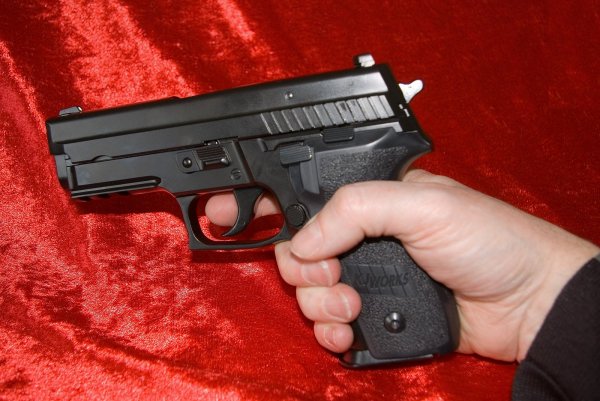
The KP02 replicates the latest railed P229 design, so the frame features a standard sized rail for fitting torches, but aside from some chequering on the front of grip and front edge of the trigger guard there is little noteworthy about the frame, aside from it feeling solid in the hand.
The gun is double action, of course, but the hammer features a serrated spur, which makes it easy to cock and it does so with a reassuring click on this example.
There is reassuringly little play in the gun (the magazine is a little loose in the grip, but not exceptionally bad), but overall it doesnít feel precise like a Japanese GBB or even (in my view) some other budget guns like WEís 1911s and Lugers and some HFC GBBs.
Unfortunately, there is a rather crude, unrefined feels to the gun which lingers in the mind even though it has now left my hands.
Shooting Impressions
The KJW KP02 (SIG P229) is a decent enough shooter, if not especially remarkable in any respect.
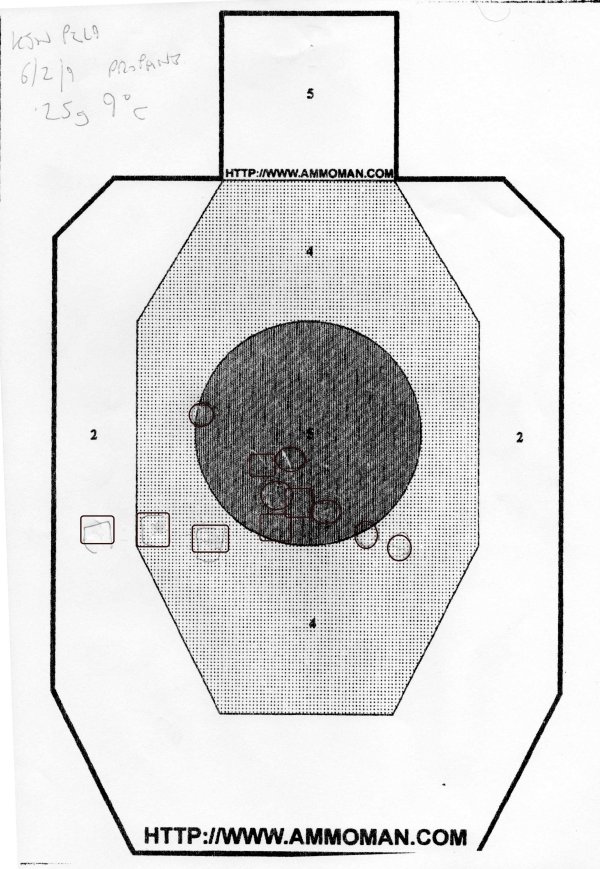
Click on image for bigger version in separate window.
Carrying out my standard 5m/6 round, off hand test, the KJW SIG P229 put 5 shots into a 43mm diameter with the shots all reasonably well clustered (if a little low with unadjusted hop-up) around the aimpoint.
The SIG was able to pass the 'pig test' too, hitting a postcard sized pig shaped target at 70 ft or so.
Over 10 shots, the KJW P229 averaged 230 fps (using Propane gas) indoors (at just 8C).
| Shot | FPS |
| 1 | 242.3 |
| 2 | 239.9 |
| 3 | 235.9 |
| 4 | 233.1 |
| 5 | 230.1 |
| 6 | 229.1 |
| 7 | 229.5 |
| 8 | 223.2 |
| 9 | 224.1 |
| 10 | 220.7 |
This was quite decent against other guns on the day and experience suggests you wil see around 280 FPS at 20C, perfectly usable power for a GBB.
Trigger pull was 980g (34 Oz), which is a medium weight pull for a GBB.
Take Down
Field stripping is exactly like the Tokyo Marui P226.
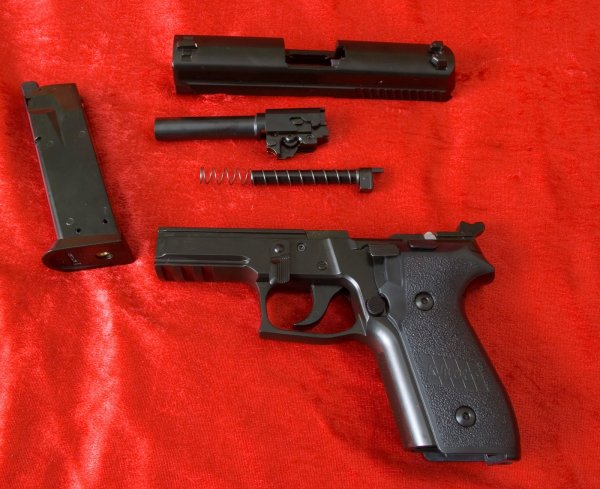
With the magazine out, the disassembly lever (where the slide lock is on a 1911) is pushed down. The slide and barrel assembly can then be pushed forward off the frame.
The barrel and recoil rod assembly can than be removed down and back from the slide.
The recoil rod features a pin which slots into the assembly below the chamber, but will just fall out once the barrel is out of the slide and the spring is a simple coil affair that slides straight off the rod.
Conclusions
The KP02 is certainly no beauty queen, but it feels solid and many will be impressed by its all metal construction. The good news is that many people report KJW guns lasting well and I havenít seen any reports of particular problems with either the KJW P229 or their more common P226, which is technically almost identical.
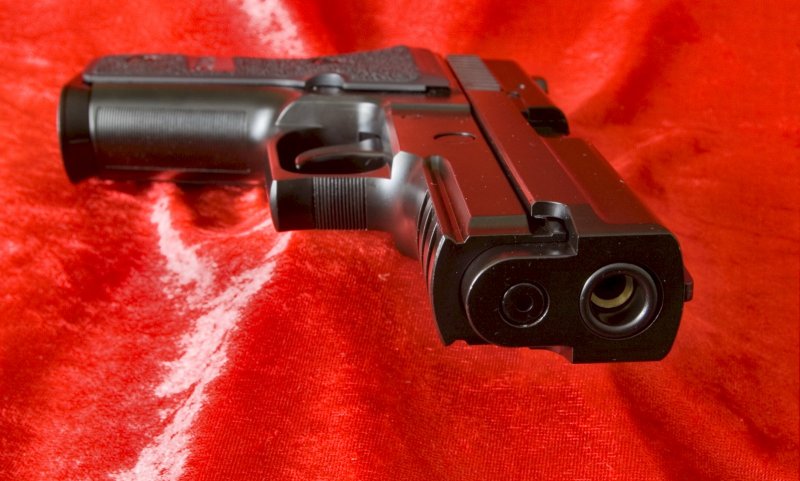
Overall, itís a decent performer and well priced for an all metal gun (At £90 or so from Airsoft Armoury, who kindly loaned this example for review), especially against Japanese GBBs as the Yen rises, but the paint finish and the complete lack of markings mean it doesnít deliver the same sense of realism and quality that even some ABS GBBs are able to.
Weight : 915g (260g Magazine)
Realism : 60%
Quality : 70%
Power : 85%
Accuracy : 80%
Real Steel link at World Guns
Buy this gun at Airsoft Armoury
Back to the Homepage